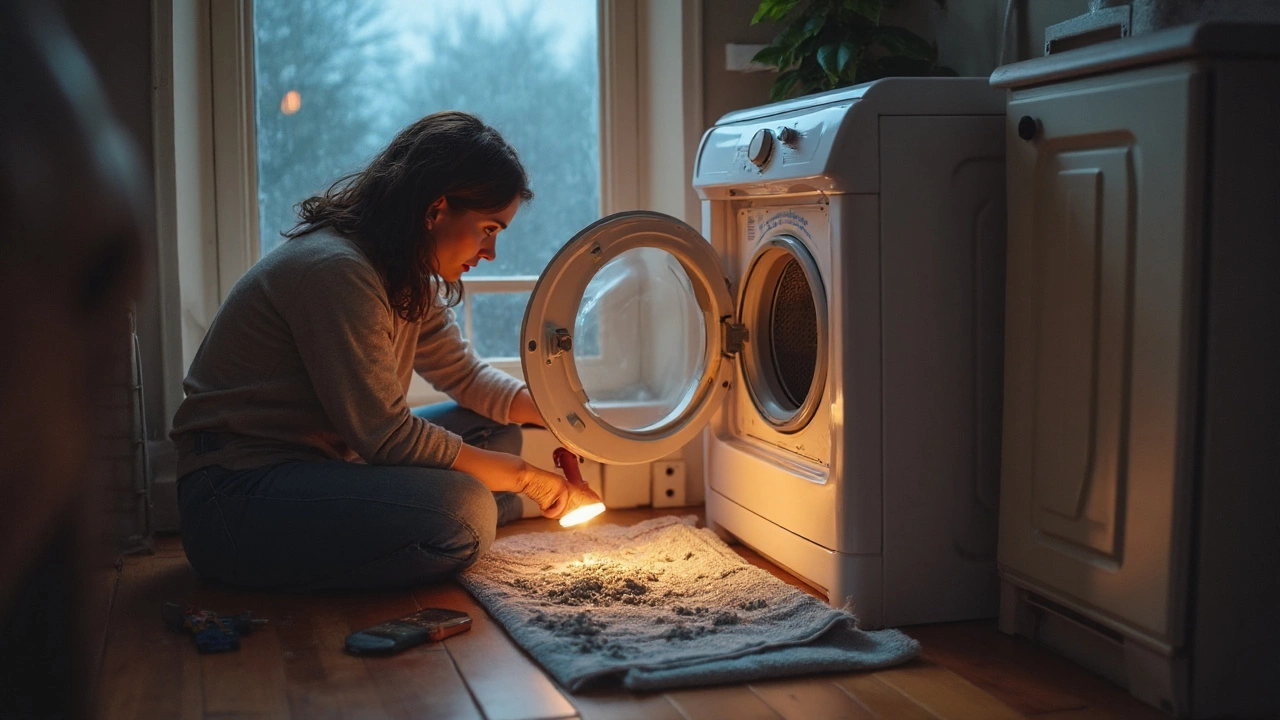Dryer Not Heating? Quick Fixes & When to Call a Pro
If your dryer is spinning but the clothes stay damp, the heating element is the most likely culprit. A dryer that won’t heat wastes time, energy, and patience. Below you’ll find the common reasons for a cold dryer, easy checks you can do at home, and clear signs it’s time to call a professional.
Common Reasons Your Dryer Won’t Heat
First, understand what parts actually produce heat. Most electric dryers use a heating element, while gas models rely on a burner and ignitor. If any of these parts fail, heat stops. Here are the usual suspects:
- Tripped circuit breaker or blown fuse – An overloaded circuit can cut power to the element.
- Faulty heating element – A broken coil won’t get hot.
- Defective thermostat or thermal fuse – These safety devices shut off the heater if they sense overheating.
- Clogged lint filter or vent – Poor airflow makes the dryer overheat and the safety fuse blows.
- Gas supply issue – For gas dryers, a closed valve or faulty ignitor can stop the flame.
Knowing which of these applies to your dryer helps you decide whether a DIY fix is possible.
Step‑by‑Step Troubleshooting Guide
1. Check the power source. Plug another appliance into the same outlet to confirm it works. Then look at your breaker box – reset any tripped breakers or replace a blown fuse.
2. Inspect the lint filter and vent. Remove the lint screen and clean it thoroughly. Next, detach the vent hose and clear any lint blockage. A free‑flowing vent restores proper airflow and often solves heating problems.
3. Test the heating element. Unplug the dryer, remove the back panel, and locate the coil. Use a multimeter set to continuity; a reading of zero means the element is broken and needs replacement.
4. Look at the thermal fuse. The fuse is usually near the blower housing. It also tests for continuity with a multimeter. If it’s blown, replace it – but first make sure the vent isn’t clogged, otherwise the new fuse will fail too.
5. For gas dryers, check the ignitor and gas valve. The ignitor glows when the dryer starts; if it’s blackened or cracked, it won’t ignite the gas. The gas valve must be open and get power. These parts are best handled by a qualified technician.
If any of these steps reveal a broken component, you can order the correct part online and install it yourself if you’re comfortable with basic DIY. Otherwise, it’s time to call a repair service.
When to call a professional
Call a pro if you find a damaged thermal fuse and the vent is clear, if the heating element test is inconclusive, or if you’re dealing with gas components. A reputable local service will diagnose the issue quickly and have the right parts on hand. Look for a company that offers same‑day service, transparent pricing, and a guarantee on their work – that’s how you avoid surprise bills.
Regular maintenance goes a long way. Clean the lint filter after every load, inspect the vent quarterly, and run a short empty cycle every few months to keep the drum and heating element free of residue. A little upkeep prevents most heating failures and keeps your dryer running efficiently.
By following these checks you can often get your dryer back to full heat without waiting for a technician. If the problem persists, don’t hesitate to reach out to a trusted repair service – a quick fix now saves you from endless damp clothes later.

Dryer Problems: What Usually Goes Wrong and How to Fix Them
The most common dryer faults, what causes them, how to diagnose them, and when to fix or call a pro. Clear steps, costs in AUD, safety notes, and prevention tips.